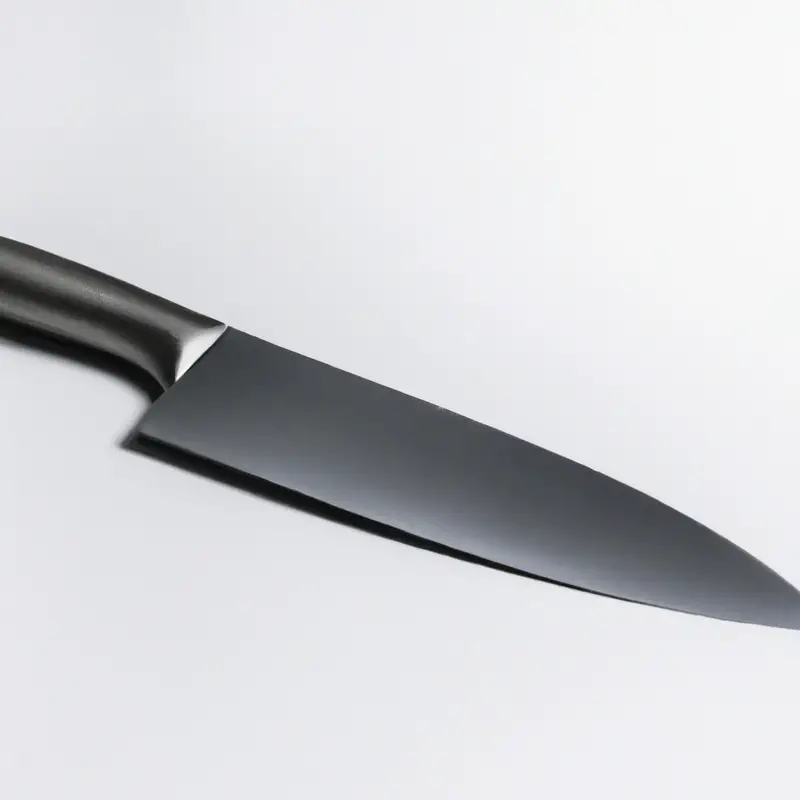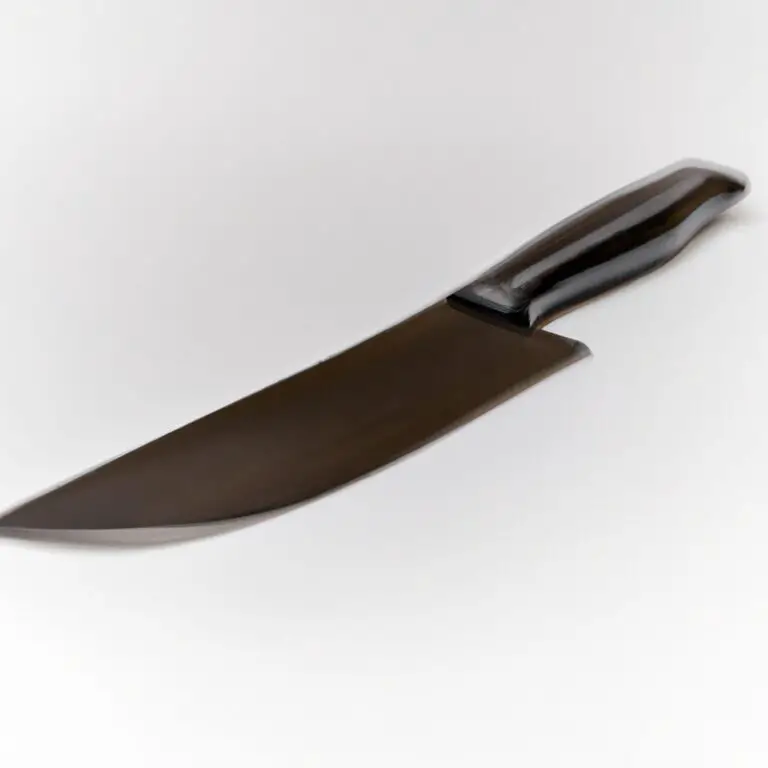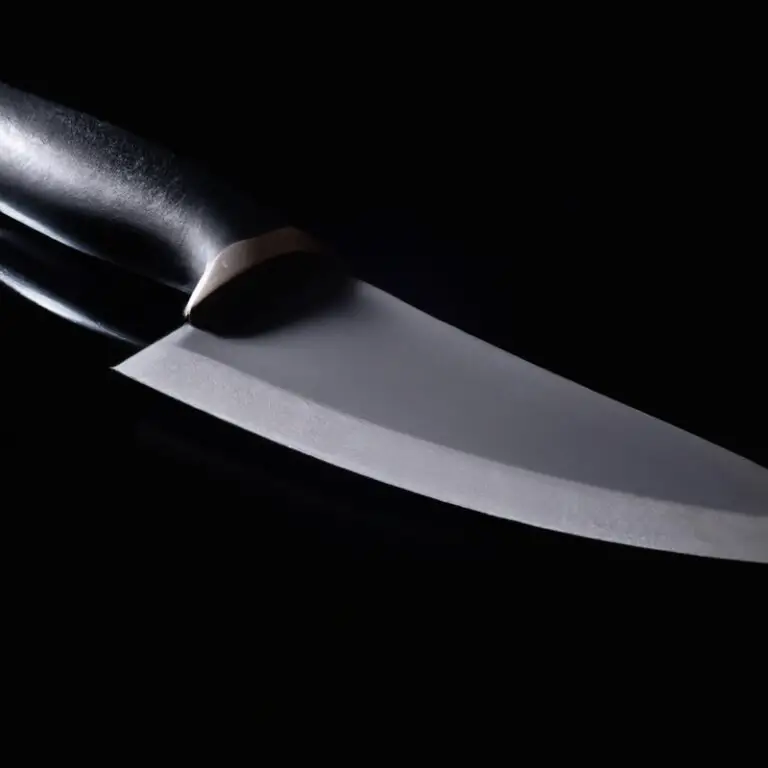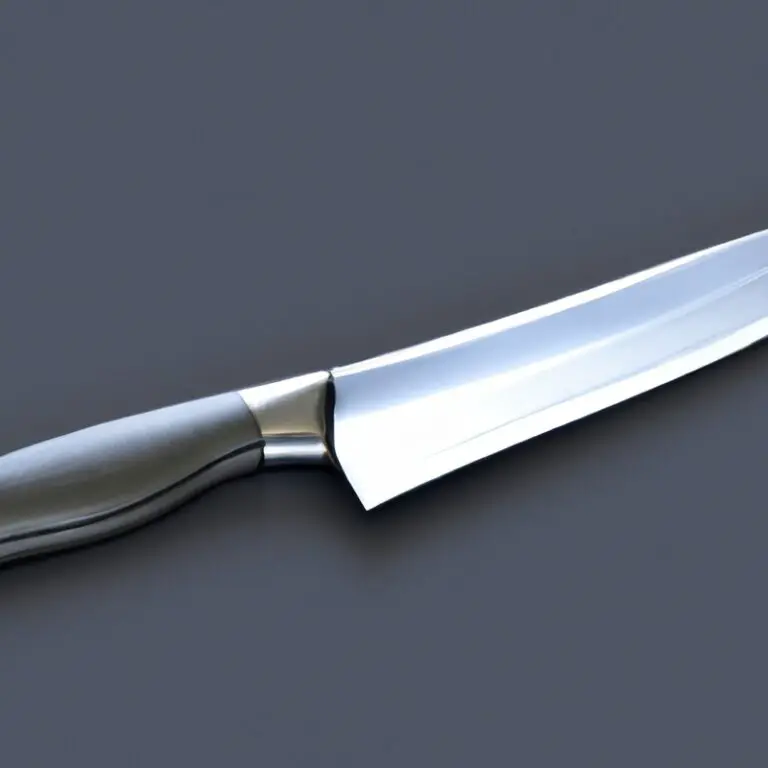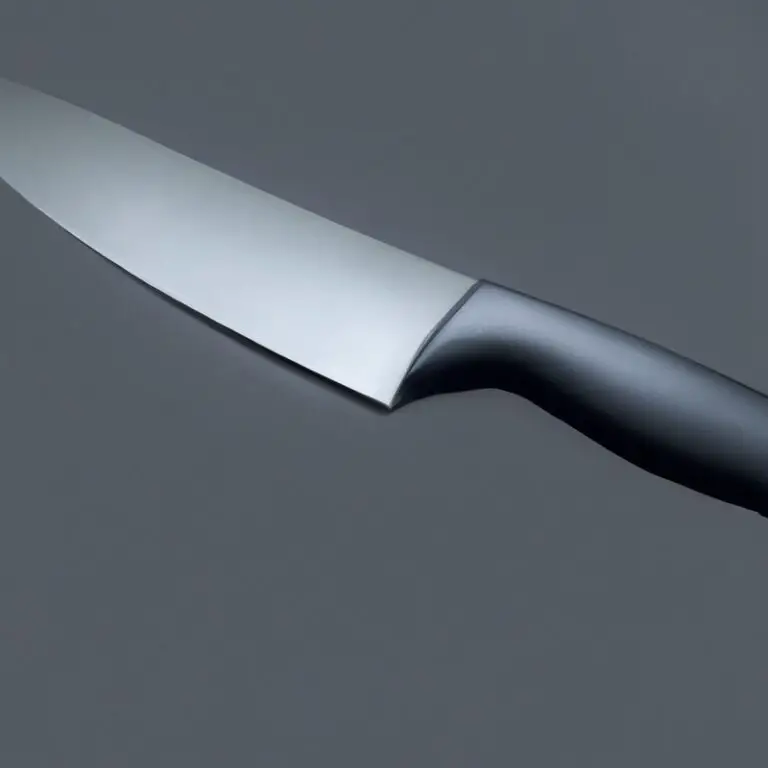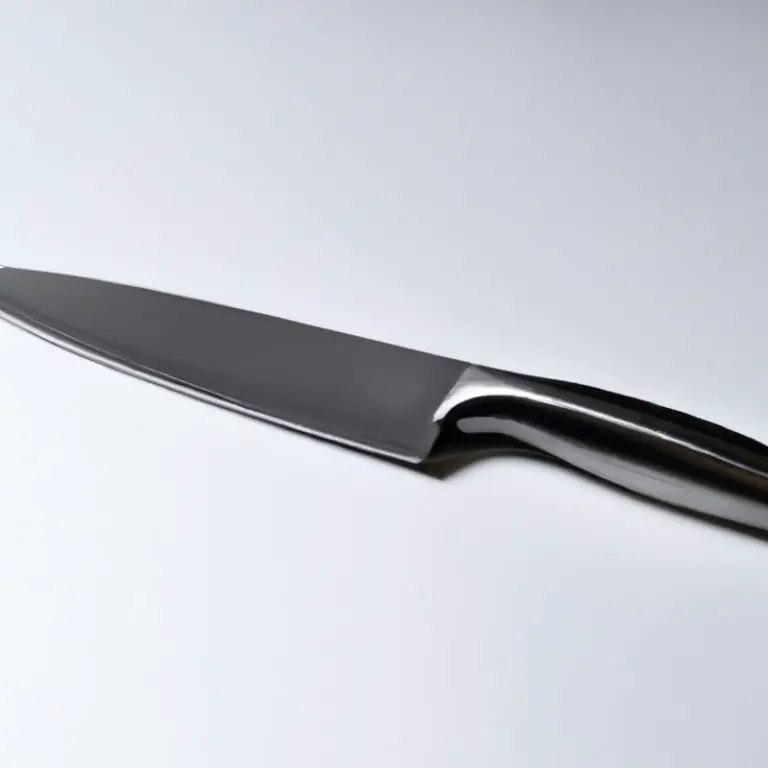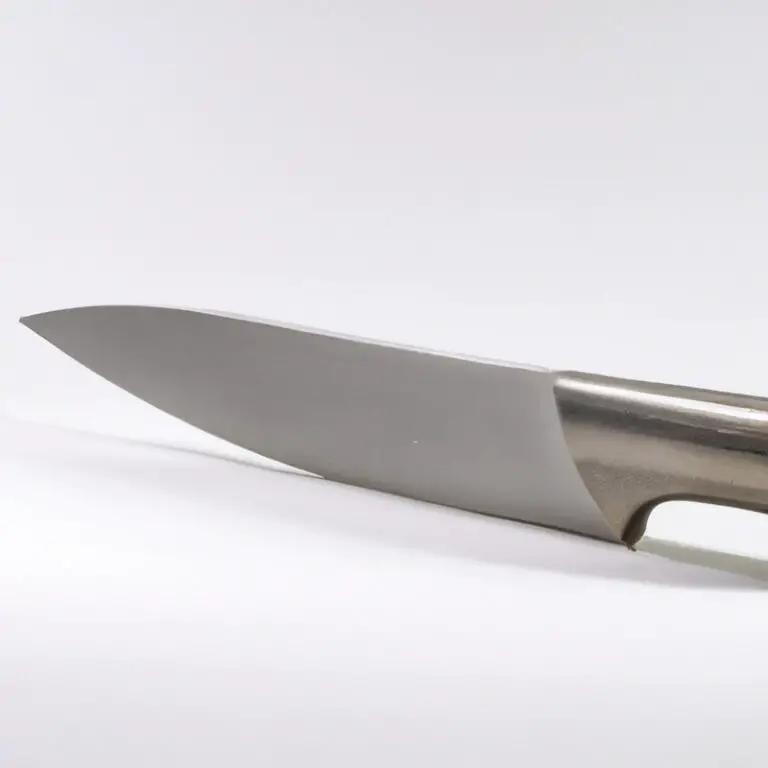Can You Use a Santoku Knife For Slicing Vegetables? Absolutely!
Key Takeaways:
- Santoku knives are versatile tools that can be used for multiple cutting tasks, including slicing vegetables.
- The flat edge of a Santoku knife allows for precise cuts and minimizes crushing or tearing of vegetables.
- It is important to choose the right knife for the task to ensure efficient and safe cutting, making a Santoku knife a great option for slicing vegetables.
- Proper care and maintenance of a Santoku knife is essential to ensure safety and longevity of the tool.
Santoku knife is a popular tool in the kitchen, especially among the Japanese cuisine enthusiasts. One question that often arises is whether it can effectively slice vegetables.
In my experience, a good quality Santoku knife can easily handle various types of vegetables, resulting in precise, thin cuts and reduced wastage.
However, it’s crucial to understand the differences between a Santoku and other knives, and to learn the proper techniques for slicing and maintenance to ensure optimal performance. Let’s dive into the details and explore the benefits and potential pitfalls of using a Santoku knife for vegetable slicing.
| Santoku Knife for Slicing Vegetables | Pros | Cons |
|---|---|---|
| Blade Design | – The blade design of a Santoku knife makes it ideal for slicing vegetables. – It has a straight edge, which allows for easy chopping and precise cuts. – The wide blade also allows for scooping and transporting sliced vegetables easily. | – The Santoku knife may not be as effective for tasks that require a rocking motion, such as mincing. – The wide blade can make it a challenge to slice smaller vegetables or for making very fine cuts. |
| Sharpness | – The sharpness of a Santoku knife makes it perfect for slicing vegetables. – You can easily slice through tougher vegetables with minimal effort. – The knife’s sharpness also allows for uniform slices for a more consistent presentation. | – The sharpness of the Santoku knife can be dangerous. You must handle it with caution and make sure you use proper techniques to avoid injury. |
| Ease of Use | – Santoku knives are designed with ergonomics in mind, offering a comfortable grip. – It is easy to control the blade, making it easier to cut vegetables and reduce the risk of injuries. – The Santoku knife also has a lighter weight than many other knives, making it perfect for extended use. | – The lighter weight may not work for some people who prefer a heavier knife. – The smaller size may not be comfortable for those with larger hands. |
What is a Santoku knife and why is it popular for vegetable slicing?
A Santoku knife is a Japanese-style knife that has become popular for slicing vegetables. It typically has a shorter blade length than a traditional chef’s knife and a wider blade shape with a slightly curved edge.
The word “Santoku” means “three virtues” in Japanese, and refers to the knife’s ability to chop, slice, and dice.
The popularity of the Santoku knife for vegetable slicing is due to its design, which allows for precise and clean cuts. The wide blade allows for a better grip and more surface area to slice through vegetables, while the curved edge allows for a rocking motion when slicing.
The shorter blade length also makes it easier to handle when working with smaller vegetables.
Overall, the Santoku knife has become a popular choice for vegetable slicing among both professional chefs and home cooks because of its versatility and precision when it comes to chopping and slicing vegetables.
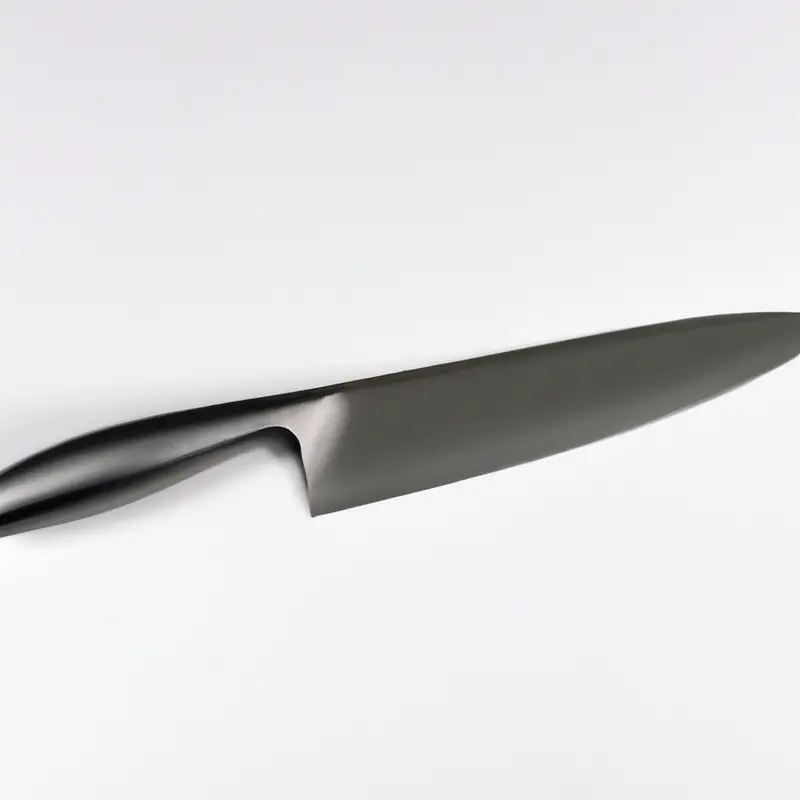
Differences between a Santoku knife and other types of knives for vegetable slicing
The main difference between a Santoku knife and other types of knives for vegetable slicing is the shape of the blade. Unlike a typical Chef’s knife, a Santoku knife has a shorter, wider blade with a slightly curved edge.
This design allows for a rocking motion while cutting, making it easier to slice vegetables with precision and accuracy.
Additionally, the flat spine of a Santoku knife can be used to apply pressure to tough vegetables and root vegetables. Overall, a Santoku knife offers a more specialized and efficient option for vegetable slicing compared to other knives.
Benefits of using a Santoku knife for vegetable slicing
A Santoku knife is an ideal choice for vegetable slicing due to its unique features. Here are some benefits of using a Santoku knife for vegetable slicing:
- Versatility: The design of a Santoku knife allows for versatile slicing, dicing, and chopping of different vegetables. The broad blade and slightly curved edge make it easy to perform a variety of cutting techniques.
- Precision: The sharp and lightweight blade of a Santoku knife ensures precise cuts. This allows for complete control over the thickness of the vegetable slices.
- Comfortable grip: Santoku knives often have ergonomic handles that provide a comfortable and secure grip, making it easy to slice vegetables without straining the hand or wrist.
- Reduced bruising: The flat edge of a Santoku knife reduces the chance of bruising delicate vegetables such as tomatoes and cucumbers, ensuring a clean cut every time.
- Efficient cutting: The sharp, thin blade of a Santoku knife allows for effortless cutting through even the toughest of vegetables, resulting in faster and more efficient food preparation.
Overall, a Santoku knife is an excellent choice for vegetable slicing due to its versatility, precision, comfort, reduced bruising, and efficient cutting abilities.
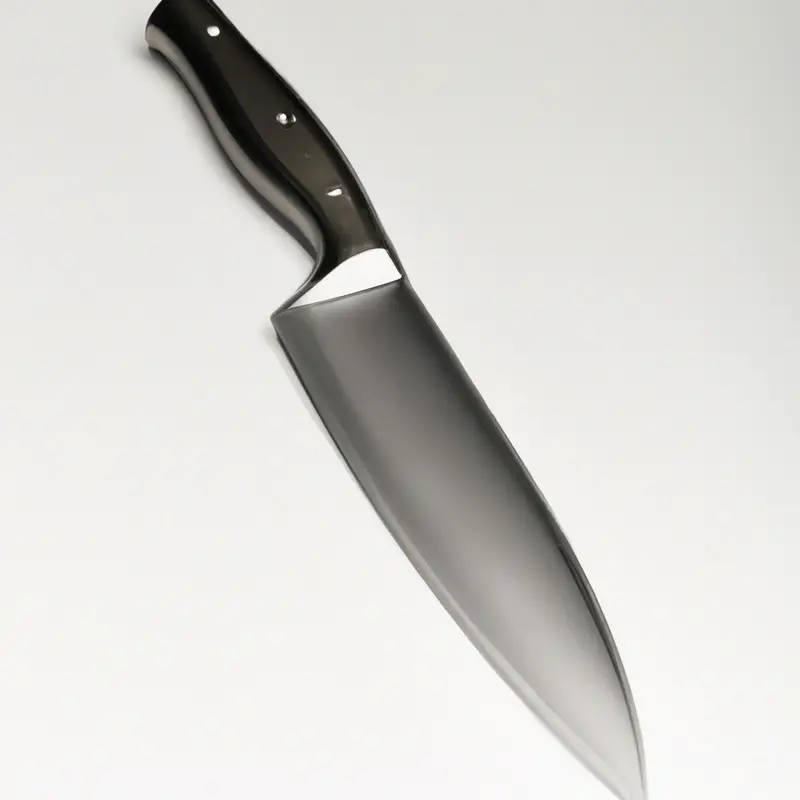
How to properly hold a Santoku knife for vegetable slicing
To properly hold a Santoku knife for vegetable slicing, it’s important to grip the handle firmly and comfortably. The handle should be held with all four fingers wrapped around it, while the thumb rests lightly on top of the blade’s spine.
This allows for greater control and precision during slicing, reducing the risk of injury and improving the quality of the cut.
The blade should be held at a slight angle with the cutting edge touching the vegetable’s surface, and gentle back-and-forth motions should be used to achieve a clean, even cut. It’s also important to use the heel of the blade for tougher vegetables and the tip for more delicate ones.
Regular practice and proper technique will improve the operator’s skill with a Santoku knife.
Techniques for slicing different types of vegetables with a Santoku knife
Techniques for Slicing Different Types of Vegetables with a Santoku Knife:
- Straight Cuts – Use a scooping motion to cut vegetables in a downward direction, while keeping the tip of the blade on the cutting board.
- Diagonal Cuts – Cut vegetables diagonally to make longer slices by starting at one end of the vegetable and pressing the blade down, making a slicing motion.
- Rocking Motion – For chopping vegetables, use a back-and-forth rocking motion to chop the vegetable quickly and evenly.
- Rolling Cut – Slice vegetables like carrots and cucumbers using a rolling cut method, starting at the base of the vegetable and rolling the blade down the length of the vegetable.
- Precision Cut – For more delicate vegetables like tomatoes, use a precision cut method by piercing the vegetable with the tip of the blade and slicing smoothly through.
Practicing these techniques will help you master slicing different types of vegetables with a Santoku knife efficiently and effectively. Remember to keep your blade sharp, hold the knife securely, and maintain a consistent angle while cutting to prevent injury and achieve optimal results.
Maintenance and sharpening tips to keep your Santoku knife functioning properly for vegetable slicing
To maintain and sharpen your Santoku knife for effective vegetable slicing, follow these simple tips:
- Clean your knife after each use. Wash it with mild detergent and warm water, dry it with a soft, clean cloth, and store it in a dry place.
- Sharpen your knife regularly. Use a honing steel or sharpening stone to maintain the blade’s edge. It is preferable to sharpen it before it becomes dull.
- Use the right cutting board. Avoid using hard surfaces like granite or glass, which will damage the blade. Use a soft cutting board made of wood or plastic.
- Use proper cutting technique. Do not twist or move the blade back and forth when cutting. Instead, use a gentle rocking motion, allowing the blade to do the work.
- Do not use your Santoku knife for cutting hard or frozen foods as it can damage the blade. Use it only for vegetables, fruits, and soft foods.
By following these simple maintenance and sharpening tips, you can keep your Santoku knife functioning at its best, ensuring efficient and effortless vegetable slicing every time.
Common mistakes to avoid when using a Santoku knife for vegetable slicing
Common Mistakes to Avoid when using a Santoku Knife for Vegetable Slicing:
- Using an incorrect cutting technique: Many people tend to use a sawing motion when slicing vegetables with a Santoku knife. However, this can lead to uneven cuts, and it can also be dangerous.
- Holding the knife incorrectly: Holding the knife too tightly or too loosely can affect the accuracy of your cuts. It is important to hold the handle firmly and grip the blade lightly.
- Using a dull knife: A dull Santoku knife can cause damage to both the knife and the vegetables. Sharpen your knife before use to ensure precision and safety.
- Cutting large and hard vegetables: A Santoku knife is not designed for cutting large and hard vegetables such as pumpkins or squash. Use a larger knife for these types of vegetables.
- Neglecting maintenance: Proper maintenance of a Santoku knife is essential to ensure longevity and good performance. Always wipe the blade after use, and store the knife in a safe place.
By avoiding these common mistakes, you can ensure that your Santoku knife will work effectively and effortlessly when slicing vegetables.
Other uses for a Santoku knife besides vegetable slicing
Besides slicing vegetables, Santoku knives can also be used for other tasks in the kitchen. Here are some of them:
- Cutting meat: The sharpness of the Santoku knife’s blade makes it an ideal tool for cutting through meat, including poultry and fish.
- Slicing fruit: The thin blade of the Santoku knife makes it perfect for slicing through fruits, such as oranges and melons, with precision.
- Chopping herbs: The Santoku knife’s height and blade help to chop herbs in a fast and efficient manner.
- Dicing onions and garlic: The Santoku knife’s sharp blade is excellent for dicing onions and garlic, creating uniform pieces.
- Cutting through hard cheeses: Due to the Santoku knife’s thin blade, it can cut through hard cheeses like parmesan and cheddar with ease.
It’s important to note that while the Santoku knife can be used for multiple tasks, it’s best to use different knives for different purposes. For example, using a serrated knife for cutting bread or a boning knife for removing bones from meat.
The best types of vegetables to slice with a Santoku knife
The best types of vegetables to slice with a Santoku knife are those that require precision and a clean slice. Santoku knives are ideal for slicing vegetables such as tomatoes, cucumbers, eggplants, and carrots as their sharp edges can cut through them effortlessly.
These knives are especially useful for tasks that require thin and uniform slices, like slicing onions or trimming the stem from broccoli.
However, it may not be the best choice for thicker and tougher vegetables like sweet potatoes or butternut squash, as these types of vegetables require a heavier and more robust knife to slice through the flesh. If you’re uncertain about the specific type of vegetable to slice with a Santoku knife, it’s essential to consider the hardness of the vegetable to find a suitable knife that will produce the desired result.
Alternatives to using a Santoku knife for vegetable slicing
While a Santoku knife is a versatile option for vegetable slicing, there are also alternative knives that can get the job done effectively. One alternative to using a Santoku knife is a chef’s knife.
Chef’s knives have a wider blade than a Santoku knife, making them better for slicing larger vegetables like butternut squash.
Another alternative is a vegetable slicer or mandoline. These tools have sharp blades that can produce thinner, more uniform slices of vegetables like cucumbers and zucchini.
Lastly, a paring knife can also be used to slice small or delicate vegetables like cherry tomatoes or mushrooms.
Its smaller blade allows for more precision and control. It’s important to find the right knife for the vegetables being sliced to ensure a clean and efficient cut.
Experiment with different knives and find the one that works best for your specific needs.
Final Verdict
The Santoku knife is an excellent tool for slicing vegetables due to its unique design and features. It offers a versatile cutting experience and makes fruit and vegetable slicing a breeze.
By following the proper techniques and maintenance tips outlined in this article, you can maximize the effectiveness of your Santoku knife and enjoy its benefits for years to come.
Don’t hesitate to try out this popular Japanese knife for slicing your favorite vegetables and experience the difference for yourself. With its sleek design and precision, you’ll wonder how you ever sliced without it.
Trust us, once you go Santoku, you’ll never go back.

